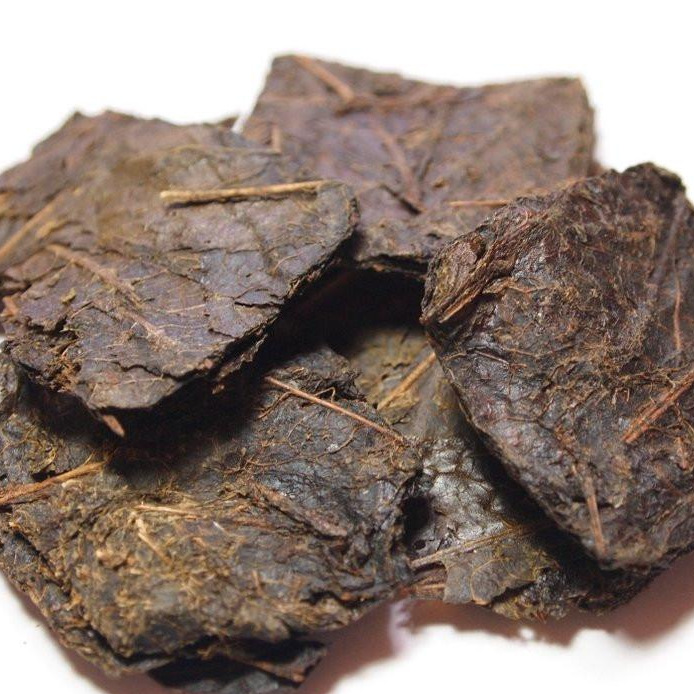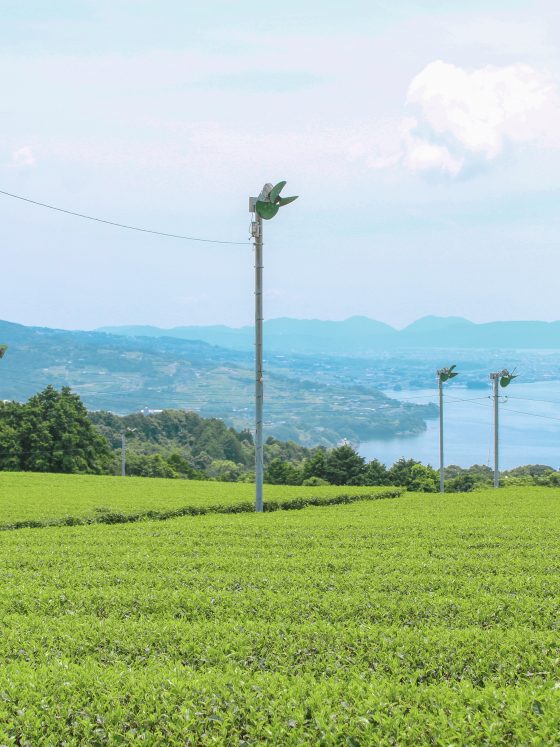Goishicha (碁石茶, Go-ishi-cha) is produced in Kochi Prefecture, in the south of Shikoku island. The words “go-ishi”, which form the name of this tea, denote pebbles for playing Go. Goishicha has the form of rectangular tiles, which, despite their rectangularity, when laid out in large quantities on a flat surface (during drying, for example), remind go board game.

For the production of goishicha, shoots (branches with leaves and all) of tea trees are used, which, after being cut (in mid-July), are fixed with steam, and the liquid drained from the processed raw material is collected for further use. After that, the tea leaves are made into a pile, some 50-70 cm high, which is then covered and left for aerobic fermentation with the participation of fungi, for 7-10 days. Then the tea leaves are placed in barrels, wetted with the liquid collected during steam fixation, and put under a heavy stone press for about 20 days for anaerobic fermentation involving mainly lactic acid bacteria. After that, the mass of tea leaves is first cut into large “bricks” still in barrels, removed from the barrels, then cut again into rectangular tiles with a side of about 3 cm and left outdoors to dry in the sun for three days.
In the past, goishicha was mostly used as an additive to different dishes (for example, it was added to rice porridge), but now it is often brewed (steep it for 4-5 minutes, make several infusions or boil for a couple of minutes) for drinking as any other tea. As a rule, you get a light drink with gentle sourness, without bitterness and with slight pleasant astringency.
Here is an excellent page about goishicha in Japanese, with a bunch of photos. Here is a description of the tea and tasting notes on My Japanese Green Tea. Here is a link to a company selling goisicha (with nice pictures and videos). Here is one excellent “process-oriented” video, and one more purely commercial video.











